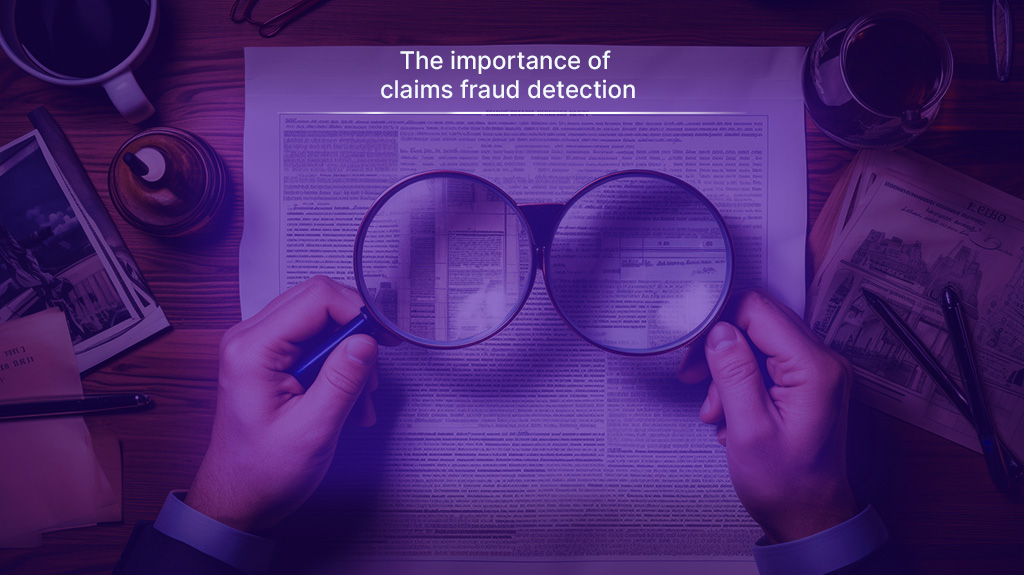Insurance fraud is a serious problem. Not only does it cost the insurance industry billions of dollars every year, but it also negatively impacts consumers. For example, insurance fraud can cause premiums to rise for everyone else. In addition, when a policyholder commits fraud on an application or claim, they cheat their own insurance company and other honest customers. For these reasons, insurance companies invest heavily in fraud detection technology as part of their anti-fraud strategies.
What is Insurance Fraud?
Insurance fraud is a crime and a deliberate act of deception. It can affect anyone, from the individual who accidentally misstates their age on a car insurance application to large corporations that commit sophisticated schemes to defraud insurers. Insurance fraudsters are becoming more sophisticated, and their crimes often cross borders.
The problem of insurance fraud has become more urgent than ever:
- In 2022, insurance adjusters expect 20% of claims to involve fraud.
- In addition, the number of digital insurance fraud cases in the United States increased by 11.1% from 2020 to 2021.
- In early 2022, public benefits fraud schemes affected 29% of social security, healthcare, and unemployment insurance organizations.
- 68% of respondents believe the level of suspected fraud against their company has risen over the last three years.
In today's digital world, the risk of insurance fraud is rising.
Why is it Important to Detect and Prevent Insurance Fraud?
Insurance fraud is a crime that costs the insurance industry billions of dollars each year. Unfortunately, it can also put innocent people out of work and increase the cost of insurance for all policyholders. Insurance fraud detection systems help identify suspicious activity, allowing businesses, individuals and organizations to take action before it hurts their business or reputation.
- Preventing fraud will save money and time in the long run.
- The average cost per claim for auto insurance was $2,000 in 2017 (according to State Farm). That's why detecting fraudulent claims early on is so important—it helps minimize losses from false claims while preventing them from happening again in future years!

The Impact of Insurance Fraud on the Insurance Industry and Consumers
Insurance fraud can have a significant impact on the insurance industry and consumers.
According to the Coalition Against Insurance Fraud, fraudulent claims cost the industry billions annually. In addition, if the person files a fraudulent claim, they may have trouble getting insurance in the future—their premiums will likely increase due to their history of filing false claims.
If they're caught committing insurance fraud and convicted by law enforcement officials or prosecuted through civil court proceedings (such as arbitration), fines and prison sentences are possible punishments from both state and federal governments.
People who commit insurance fraud can receive a lifetime ban from filing claims. It is especially devastating if they work in the insurance industry or as an agent; they may lose their job and be unable to find other employment if convicted of committing insurance fraud.
The Consequences of Not Detecting Insurance Fraud
The consequences of not detecting insurance fraud are far-reaching. First, the fraud costs are passed on to consumers, who pay higher premiums. Insurance companies lose money and may go out of business if they cannot recoup their losses from fraudulent claims.
Failing to detect fraud is a crime under state law, which means that if they knowingly allow someone who has committed fraud on their policy or allow them access to the claim process, then they could be held liable for any damages caused by this person's actions or inaction (i.e., filing false claims).
The consequences can include:
- Non-payment of claims
- The insurer seeking costs incurred
- Cancellation of the insurance policy
- Reporting the case to the police for further investigation
- As a result, they could not obtain insurance and other financial services.
- Prosecution and a custodial sentence
- A criminal record
Benefits of Insurance Fraud Analytics
Insurance fraud analytics can deliver several benefits to the organization, including:
Faster Fraud Detection
Fraud detection systems can speed up the process by automating some of the manual tasks. It also helps the organization get to the root of the problem quickly, allowing them to resolve it before it gets out of hand or becomes a bigger issue in the company.
More Accurate Fraud Detection
Fraudulent claims are often detected through manual processes (like manually reviewing each claim). Still, when the organization uses automated tools like machine learning algorithms, they can identify patterns in data that would otherwise go unnoticed—these patterns might point directly at fraudulent activity! This way, they'll be able to cut down on false positives while also catching as many actual fraud cases as possible.
Proactive Fraud Detection
Proactive fraud detection is a strategy that identifies and stops fraudulent activity before it occurs. This approach has several benefits, including:
- Reducing costs associated with fraud by preventing the use of false information to apply for insurance coverage or to make claims.
- Helping improve the insurance industry's reputation by demonstrating that they have taken steps to prevent fraudulent activity in their business.
Improved Customer Experience
Faster fraud detection means they can keep customers happy by addressing their issues more quickly and efficiently. In addition, customers who feel they're being treated fairly are more likely to purchase their products again, which is good for their business!
What is a Capital Reserve Release?
Capital reserve release is the process by which an insurance company calculates its capital reserve. The term refers to an amount of money left over by an insurance carrier after paying claims and expenses. In other words, it's what's left over when you subtract your liabilities from your assets—a way of measuring whether or not you're solvent and able to pay out on all pending claims.
Understanding Capital Reserve Release
Capital reserve release is the amount of money an insurance company has left after paying claims and other expenses. It's calculated by dividing the surplus by the incremental surplus ratio, which is the difference between a state's statutory capital and its book value of assets.
The capital reserve release can be used for any purpose, including paying dividends to shareholders or buying back shares from them (if they are public). However, an insurer cannot use its capital reserves for purposes other than those approved by regulators unless it becomes insolvent due to excessive losses on its books.
We hope this article has helped you understand the importance of insurance fraud detection. It's a complex issue that can be addressed with the right tools. If you're looking for ways to improve your company's ability to detect and prevent fraud, consider using an analytics platform like ours!
Get started with Pilotbird's fraud analytics insurance solutions; you can reduce the risk of a data breach and mitigate financial loss. In addition, we offer a range of customized solutions that can be implemented within your organization to improve fraud detection capabilities. Learn everything you need to know about fraud monitoring through our blog.
References
“Capital Reserve.” Investopedia, 2022,
https://www.investopedia.com/terms/c/capitalreserve.asp
“The Future of Insurance Fraud Detection is Predictive Analytics.” Whatfix, 2022,
https://whatfix.com/blog/insurance-fraud-detection/
“Insurance Fraud.” Federal Bureau Of Investigation, 2022,
https://www.fbi.gov/stats-services/publications/insurance-fraud
“What Are the Consequences of Insurance Fraud?” Keller Law Offices, 2022,
https://kellerlawoffices.com/what-are-the-consequences-of-insurance-fraud/





Leave a Comment
Your email address will not be published. Required fields are marked *